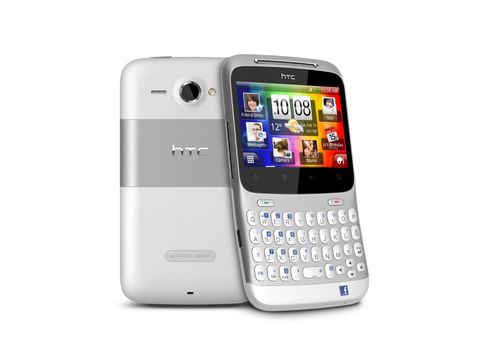Why you can trust TechRadar
Like its (bizarre choice of) name, the HTC ChaCha is no bore. Slim and well built, it feels like a quality device in the hand. It's not particularly light at 124g, but feels a lot heavier than the Incredible S for instance (despite being 13g lighter).
The body is made of white plastic and brushed metal. The battery door is plastic, and if you plan on changing the battery or the SIM card often, you may find yourself uttering a few choice words.
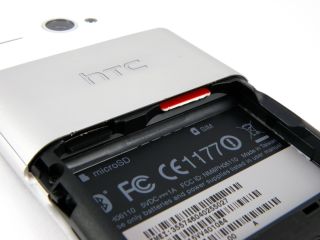
The ChaCha ships with a sticker on the screen warning about not pressing too hard on the screen, but we practically put our fingers through it trying to get the stubborn battery cover off.
Thankfully, we can't see the Facebook generation seeing the need to swap SIM and memory cards too often, so this shouldn't be that much of a problem.
For retro HTC fans, the chin is back. Introduced with HTC's first ever Android device (in fact, the world's first ever Android device), the G1, it became an odd design quirk we thought was being phased out. Evidently not.
In fact, looking at the ChaCha next to the HTC Hero of a few years back, they look remarkably similar - as if they were designed at the same time. Same colours, same materials, same chin.
But it does have a function here - as you hold the ChaCha to look at the screen, the keyboard is naturally tilted towards you. We can't work out if it's a nifty bit of designer genius or a coincidence but either way, the chin makes the phone bulge out if wearing tighter trousers, so beware!
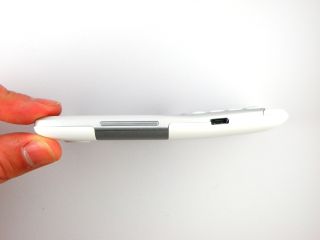
The QWERTY keyboard is handy and pleasant to use with rubberised keys, since the ChaCha is a messaging device, but that dedicated Facebook button at the bottom of the phone which fires up a Facebook client is the main selling point.
At the top is the standard 3.5mm headphone jack and a lock button, and the left hand side holds the volume rocker and micro USB charge/sync port, while the bottom holds nothing but a tiny hole for the microphone.
There are two cameras - a 5MP autofocus job on the back complete with LED flash and a VGA camera on the front for self-portraits (or using the very handy Mirror app, which HTC bundles on Android devices and has saved our blushes on numerous occasions).
There's also an ambient light sensor for putting the display brightness onto automatic.
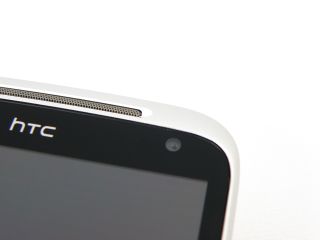
Under the screen, you'll find dedicated hardware call and hang-up buttons (something we thought HTC were no longer using, as we haven't seen them in a long time) and four touchscreen controls.
They're standard fare for HTC Android devices these days - Home, Menu, Back and Search - and acknowledge you've pressed them with a little vibration. The SIM card and memory slot are both inside the phone, behind the battery.
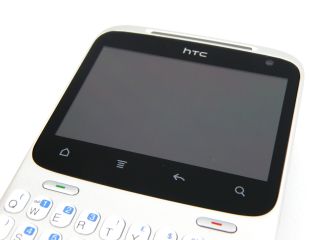
As handset manufacturers go for gold, piling in dual-core processors, Super AMOLED Plus screens and 4G capability, it's refreshing here to see that the ChaCha has some of the more old-school (and budget) specs.
The touchscreen is just 2.6 inches, with a 480x320 resolution, and the processor sits at 800MHz (it was originally set at 600MHz, but HTC appears to have upped this closer to launch). Yet, for what this phone is designed to do, that's adequate and doesn't impinge on the experience too much.
HTC has seen fit to kit the ChaCha out with both HSDPA and GPS, which is just as well since browsing and location based services are two of this handset's biggest selling points.
Within HTC's domain, the ChaCha only has competition in the form of its big brother, the HTC Salsa. That's the other 'Facebook phone' it's releasing, although it will be an O2 exclusive at launch.
HTC's biggest rival for the social networking market is BlackBerry. Ironically, the device that was, for so many years, the preserve of the businessman or CEO is now the big force for schoolchildren and teenagers who want IM.
Elsewhere, there are the INQ devices. INQ brought us the very first Facebook handset - the INQ1 - a few years ago. It sold well (albeit only on the 3 network), and now INQ is following up with the Cloud Touch, which also has deep Facebook integration.
Prepare for an onslaught and expect phones such as this to be heavily marketed by the networks - especially towards Christmas, bearing in mind the teenage target audience.
Current page: HTC ChaCha: Design and feel
Prev Page HTC ChaCha - Overview Next Page HTC ChaCha: Interface